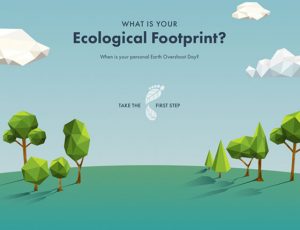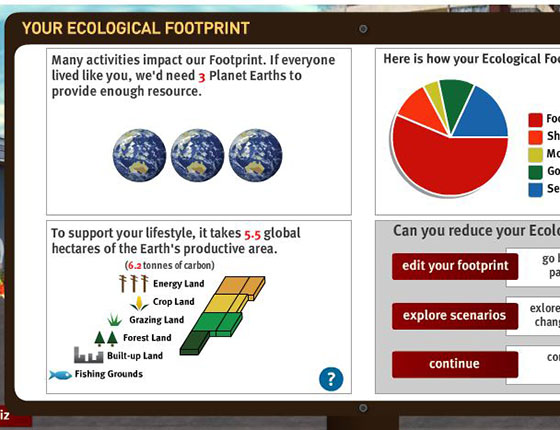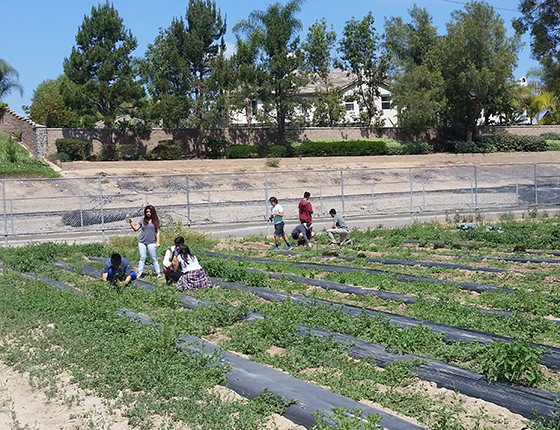 Updated September 30, 2020
Updated September 30, 2020
Dear Educators,
Thank you for using our Ecological Footprint Calculator in your classroom!
If you are having some problems using the calculator, we are offering you some suggestions here as well as some background on why we updated the calculator.
Troubleshooting Tips
1. Please double-check you are using the correct URL: https://www.footprintcalculator.org.
2. It is possible your school’s firewall is blocking the website and you may need to ask your IT manager to adjust the firewall to permit students to access this site. You can determine if that is the problem by checking if you are able to access the calculator outside of your school’s wifi network, by trying it on your own cellphone without connecting to wifi and instead using your wireless carrier’s network. Here are the domains that need to be whitelisted in the firewall:
www.footprintcalculator.org
api.footprintcalculator.org
geoip.footprintcalculator.org
cdn.jsdelivr.net
maxcdn.bootstrapcdn.com
For facebook (optional – site should work without these)
staticxx.facebook.com
www.facebook.com
connect.facebook.net
3. If neither of the above solve the problem, we have also heard from some teachers that the school may be blocking the Footprint Calculator because it includes social media sharing, including Facebook. We have implemented a solution to this problem and have heard positive feedback from educators who were previously not able to access the Calculator. Your IT manager also may be able to work around that issue by allowing school computers to access the site. If you still experience difficulties, please contact us at media (at) footprintnetwork (dot) org.
Why We Updated the Calculator
Our decision to update the Ecological Footprint Calculator was largely based on how much the old technology it was built in (Flash) impeded our ability to reach more people and share our message. There are 2 billion (billion!) more mobile internet users today than when we first made the calculator in 2007. We haven’t been able to serve that population, but by updating the technology we are now able to serve the dominant channel for internet use, especially for younger generations. Furthermore, even on desktops, Flash is being phased out on internet browsers, making our old calculator increasingly difficult to use. And finally, this platform made it very hard to easily update the calculator with our latest data and methodology.
Future Plans
Our intent is to continue adding content that teachers have found very valuable. This includes different country-specific information (and different languages). It also includes improving the pedagogy to highlight the importance and limits of solely individualized consumer action. Our new beta version of the Footprint Calculator is but the first iteration in a longer process of updates to achieve that purpose. They will take time and much fundraising to implement, but are in the works.
Country Calculator Work-Around
If you have used different country versions of the calculator in your lesson, we are hopeful that we have a work-around solution for you in the meantime. We have two additional resources to offer you to help students see how results differ by country:
- In spring 2017, we launched an open data platform, the Ecological Footprint Explorer, to make it easier for everyone to access our data. National Footprint and Biocapacity Accounts data is now available for download free of charge under a Creative Commons license. Once your students calculate their Footprint, you can direct them to the open data site to see how they compare to the average person in the US, and countries around the world. If they choose Compare Countries at the top navigation, they will go to this page, where they can see the average Ecological Footprint of all countries. They can also select a country or countries in the top left field to compare their personal results to other averages.
- Another resource we can offer is our interactive maps at footprintnetwork.org/maps, which present the data from our Footprint Explorer in a map format with a list under the map. Students can select the Ecological Footprint Per Person circle below the map, then click on a country to find the average Ecological Footprint per person in that country and compare their results. They can also look at the list under the map and see how countries rank.
Hopefully these resources will be helpful. We’ve received lots of feedback so far from educators—good and bad—which we are looking at closely as we continue to improve the calculator and related tools. Help us improve the Calculator to serve you better by sending your feedback to media@footprintnetwork.org.
To stay up to date on our calculator and our resources for educators, sign up for our newsletter here.
Thank you,
Global Footprint Network




